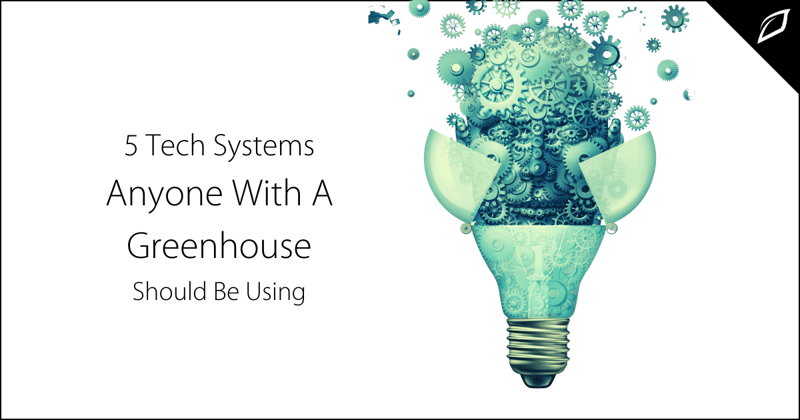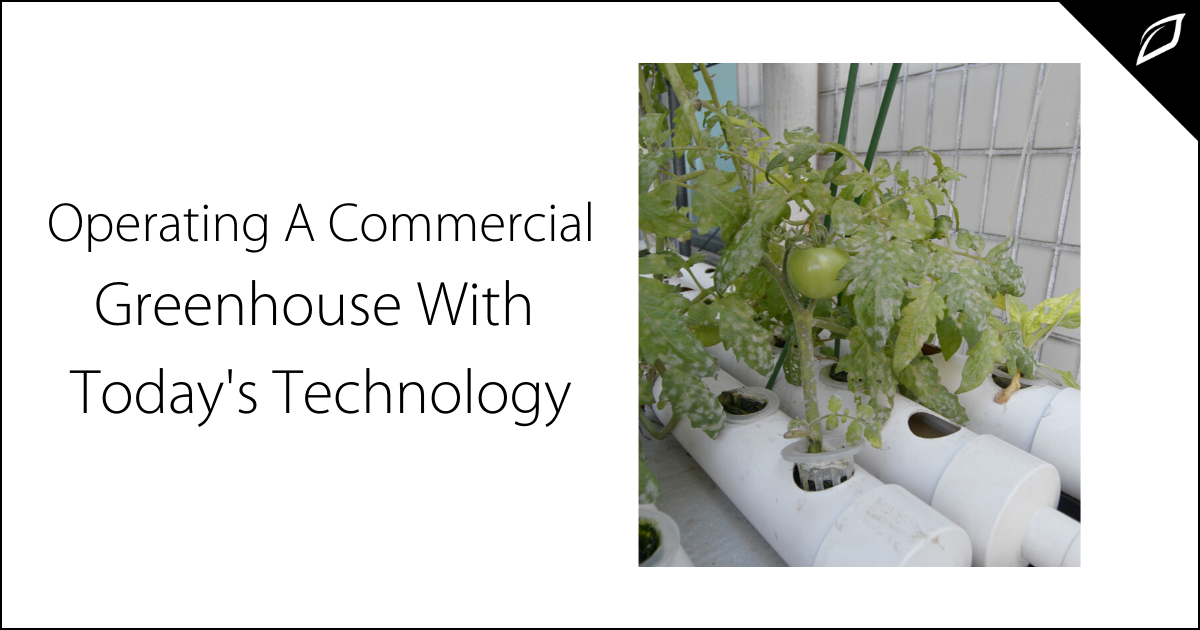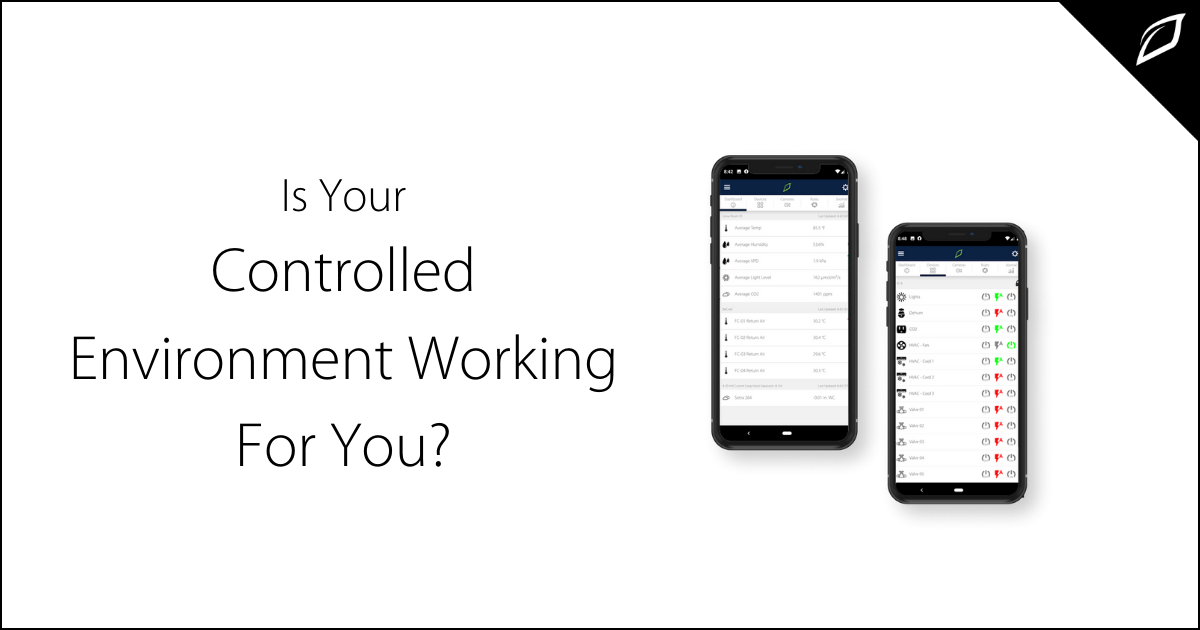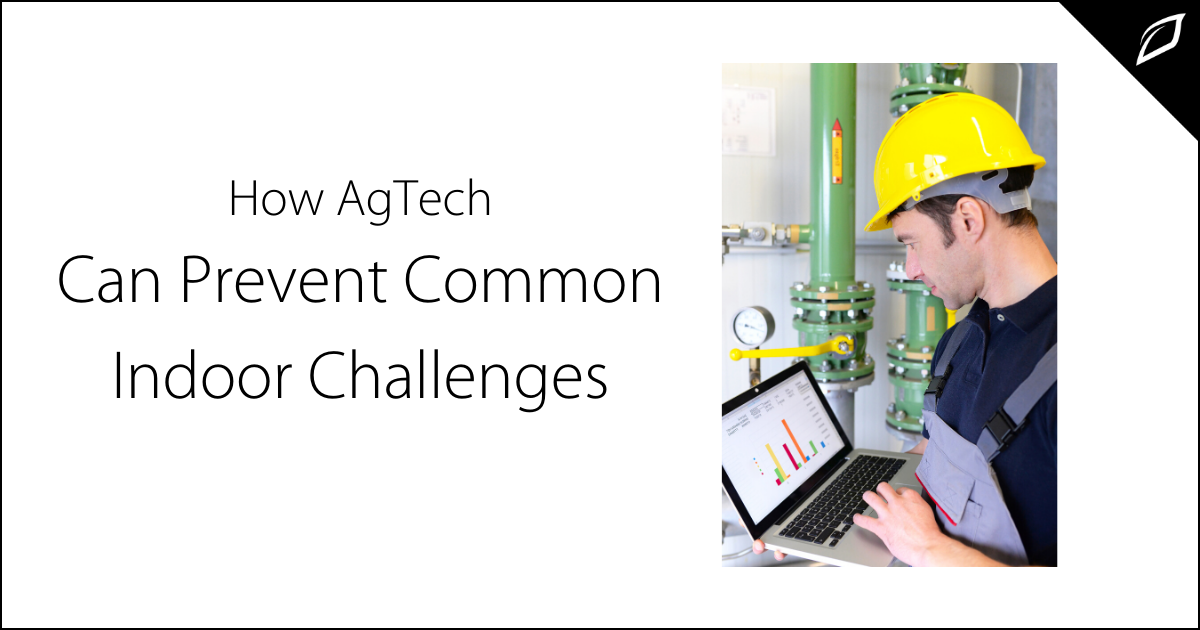Operating a Commercial Greenhouse With Today's Tech
Commercial growers looking for productivity and predictability have long turned to the greenhouse as the best means to establish a stable growing...
2 min read
 Ted Tanner, CEO and Co-Founder
:
Jul 12, 2018 10:10:00 AM
Ted Tanner, CEO and Co-Founder
:
Jul 12, 2018 10:10:00 AM


Technology offers a range of opportunities for the commercial grower to make effective use of the greenhouse environment. The latest tools enable the grower to exert a high degree of control without having to be constantly on-site. They make the growing process more efficient and can drive higher yields as well.
To that end, let’s consider the five technologies that should be present in every marijuana greenhouse: a well-designed lighting system, intelligent ventilation design, environmental sensors, an automated control system, and a remote management app.
Given the high energy use inherent in indoor cannabis production, a well-designed system for lighting and heating is critical. You need the right suite of high-efficiency lighting fixtures, along with the controls that allow for remote adjustment. Ideally, such a system will result in higher efficiency and lower operating costs, and it should utilize the sun as a primary light source.
You’ll especially want to track Daily Light Integral, is the number of light particles that are received in one full day. DLI influences plant growth and can affect a plant's root system, stems, and flowering stage. The ability to track and control DLI is key to a successful grow.
Supplemental lighting helps ensure adequate and appropriate lighting at all growing stages. In an automated greenhouse, supplemental lighting ensures plants get the needed amount of illumination regardless of latitude or other environmental factors.
Intelligent ventilation design is likewise a key ingredient. Such a system may incorporate both natural ventilation via roof vents, sidewall vents, and rollup sides, as well as forced air ventilation, driven by mechanical systems such as exhaust fans. You need ventilation to remove hot air from inside the greenhouse, as well as to promote air movement, which is necessary for plant health. Plants are happiest when there’s enough air flow to rustle their leaves a bit.
Sensors are necessary equipment in any modern greenhouse setting, with thermometers, humidity gauges, and pH sensors among the most vitally important.
Automated control systems leverage technology to maintain optimum growing conditions in the greenhouse while significantly easing the labor burden. Such systems can be set to deliver moisture and nutrients at fixed levels at set times. By setting parameters, growers can establish an automated regimen of care, with the control system automatically adjusting variables such as heat, humidity, and lighting. Such systems may also track conditions over time, giving the grower the opportunity to reflect back on which strategies are more or less effective and to make adjustments accordingly in support of future crops.
Mobile connectivity enables the grower to interact with the control system when off-site, via a smartphone app. Such systems not only make critical sensor data available 24/7; they also empower the grower to make adjustments on the fly, adding to or subtracting from the greenhouse environment as local conditions vary. This allows the grower to balance heat and humidity, adjust lighting based on external conditions, and track nutrient dosing.
These technological enhancements around automation and remote management become especially important as a cannabis grower seeks to expand an operation.
With a bigger grow, it gets harder to stay on top of environmental conditions. Short of being physically present all the time—which most growers find a prohibitive proposition—technology offers the surest means for tracking and responding to the needs of the greenhouse grow.

Commercial growers looking for productivity and predictability have long turned to the greenhouse as the best means to establish a stable growing...

The ultimate goal for controlled environments? Higher, faster, more easily repeatable yields. One 25,000-square meter Japanese indoor farm produces...

Ag-tech tools deliver solutions for farmers to some of the most common, persistent growing issues. Smart sensors, monitors, and automated tools work...